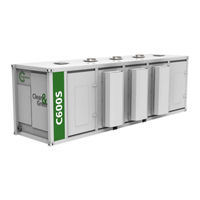Capstone Microturbine C600S Manuals
Manuals and User Guides for Capstone Microturbine C600S. We have 1 Capstone Microturbine C600S manual available for free PDF download: Installation Manual
Capstone Microturbine C600S Installation Manual (122 pages)
Brand: Capstone
|
Category: Controller
|
Size: 5 MB
Table of Contents
Advertisement
Advertisement
